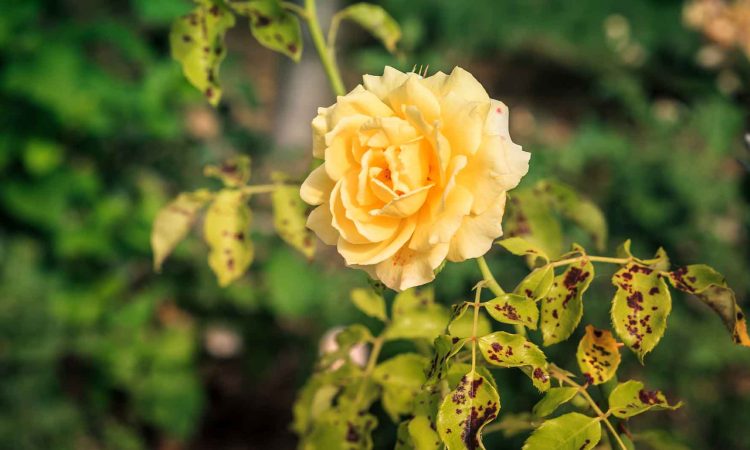
Star sooty mold, also known as black spot, is one of the most common diseases of roses. It is also very difficult to combat. But how do you recognize the fungal disease and, more importantly, how do you get rid of it?
Fighting star sooty mold: How to recognize the fungus
As much as star sooty mold is hated by hobby gardeners, the fungus is at least easy to recognize because the disease manifests itself with dark spots or dots arranged in a star shape on the upper side of the leaf.
The leaves eventually turn yellow until they fall off on their own. Star sooty mold is often found for the first time in spring (April/May). The full extent of the infestation then becomes apparent in summer, when heavily infested roses have hardly any leaves left.
Unfortunately, star sooty mold is widespread and affects almost all types of roses. It is particularly common on shrub roses. There are hardly any resistant varieties. This makes it extremely difficult to contain the fungal disease.
Fighting star sooty mold: prevention is particularly important here
Prevention is the be-all and end-all when it comes to combating star sooty mold. When buying roses, you should look for rose varieties that have good resistance properties.
The following varieties have good resistance to star sooty mold:
- Dortmund
- Yellow Dagmar
- Angela
- Heather dream
- Summer wind
When planting, you should also make sure that the location is not too damp and is well ventilated. To allow the plants to dry well after the rain, the roses should be planted at a certain distance from each other.
From May onwards, the roses should be checked regularly for the fungus and, in the event of an infestation, affected leaves should be cut off and removed. In addition, the roses should only be watered at the base of the roots.
Strengthen the immune system of roses
In general, it is important to strengthen the plants. This can be done preventively, but also after an infestation. A fertilizer containing potassium and low in nitrogen should be used for this purpose.
Of course, you can also strengthen the plants naturally, for example with a decoction of horsetail. You will need 150 grams of fresh horsetail, an onion, a bulb of garlic and some oil.
The ingredients are chopped up and boiled in water for 15 minutes together with the oil. The brew is then passed through a sieve and poured into a bottle. The brew must then cool completely.
To apply to the roses, dilute the decoction with water in a ratio of 1:5 and pour into a spray bottle. You can then spray the horsetail decoction on the affected roses or other susceptible plants for three consecutive days.
As a preventative measure, a single application is sufficient at first, but this can be repeated every few weeks in spring and summer.
If you are still unable to contain the sooty mold, a fungicide is unfortunately the only option.

